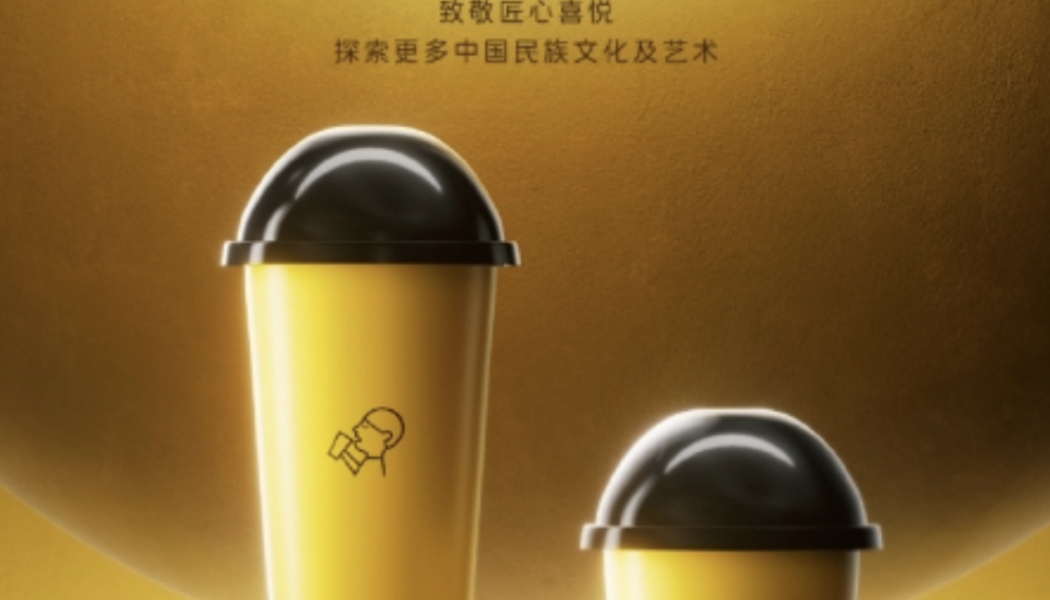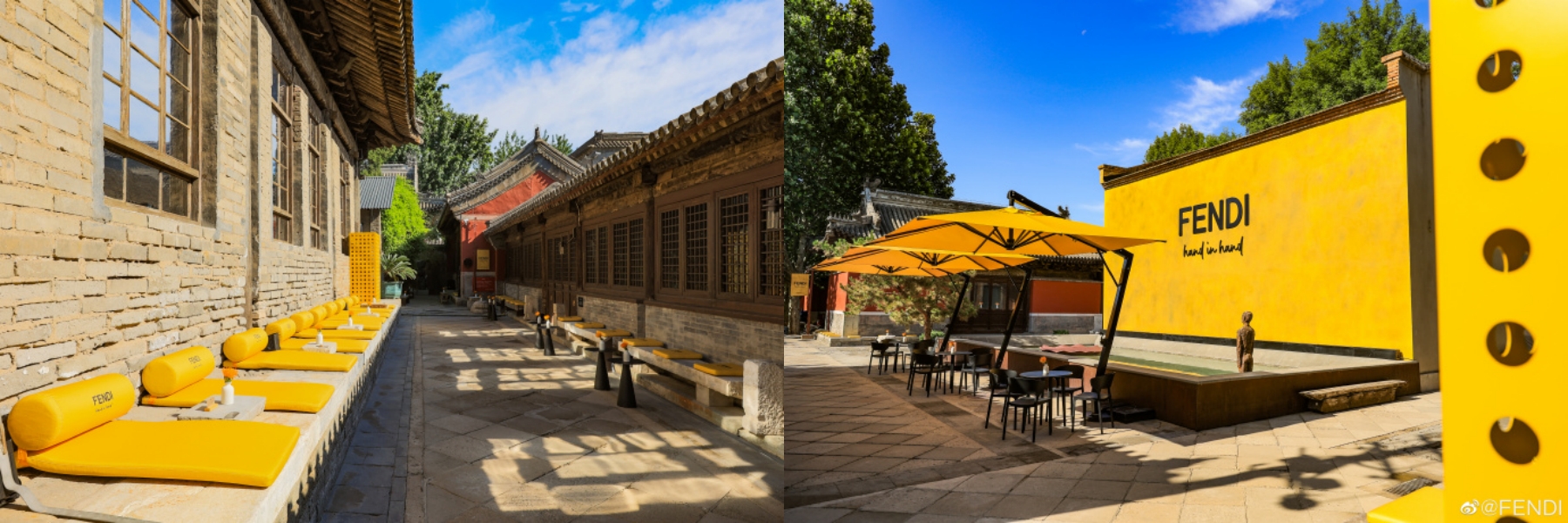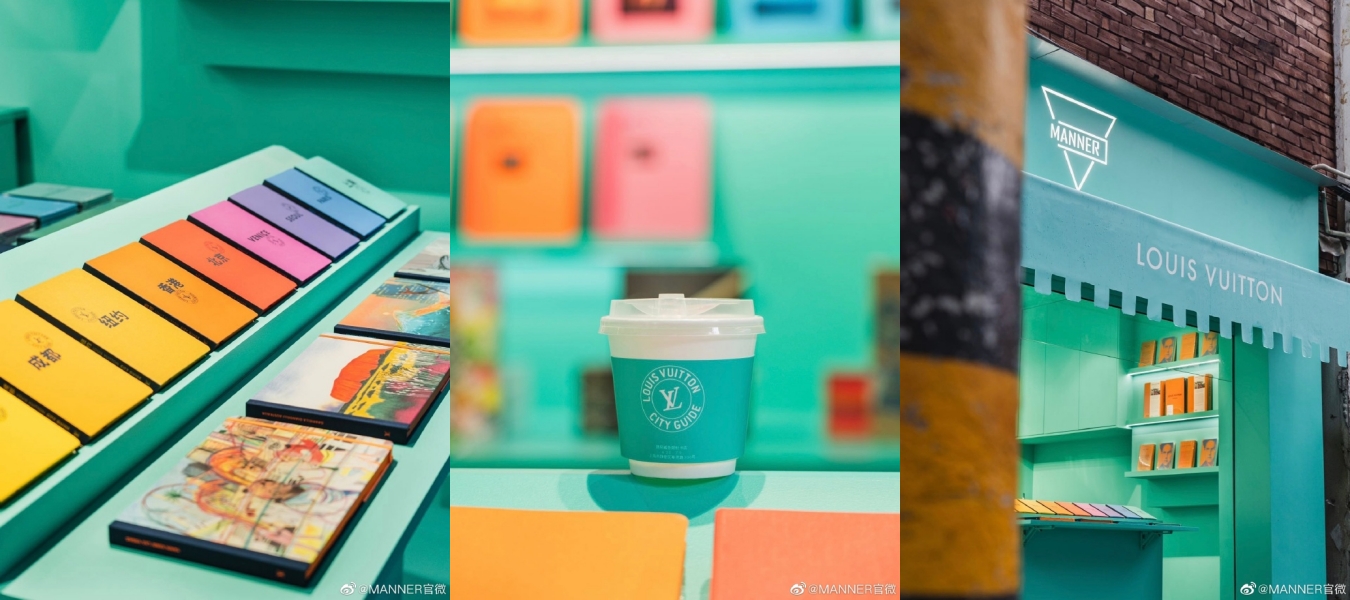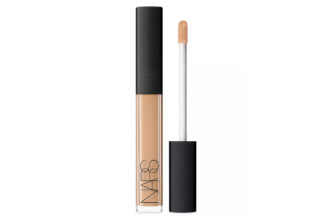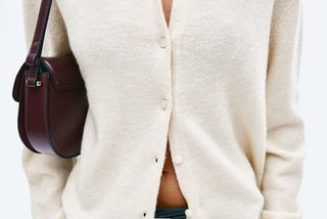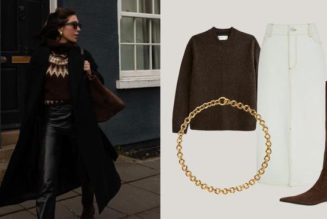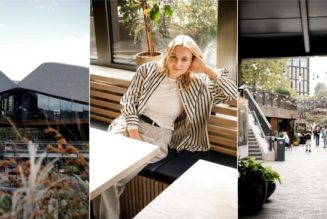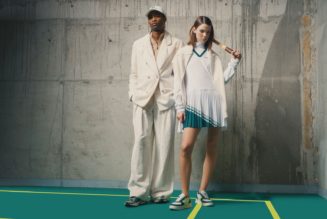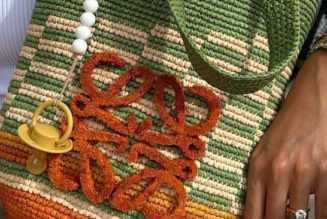Young Chinese consumers are passionate for tea and coffee. In May, top Chinese milk tea brand Heytea opted to up its game and surprise consumers by teaming up with Fendi’s “Hand in Hand” exhibition. In the following weeks, Heytea turned the yellow and black drink packaging and paper bags into ‘hunger marketing tricks’ in China, as hundreds of thousands of young people had to wait and queue online and in-store before enjoying Heytea’s new drink and collecting what might be their very-first bag with a ‘Fendi’ luxury logo affixed to it.
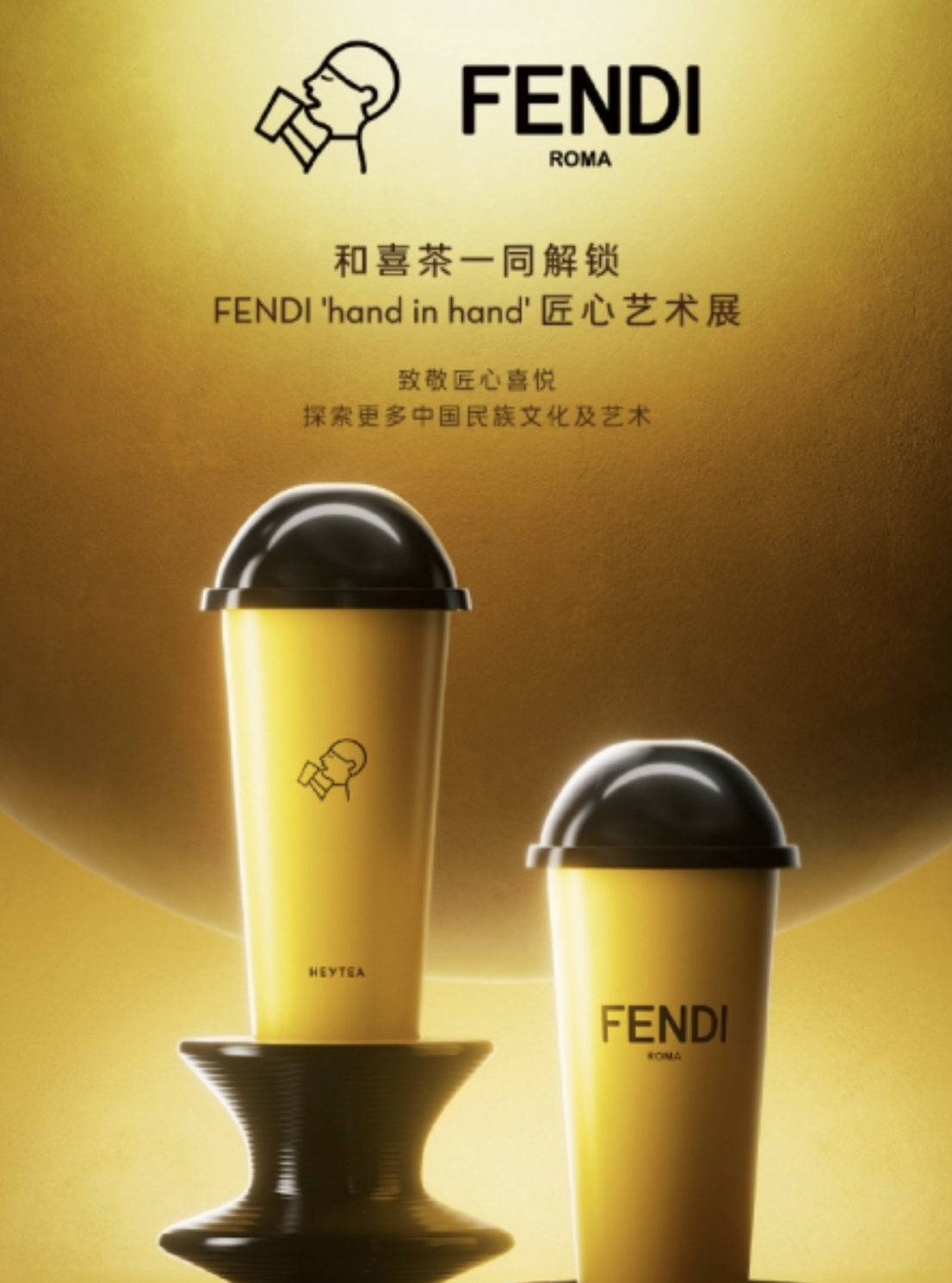
But Why Fendi and Heytea? As Fendi is one of the 75 luxury brands under LVMH, Chinese media also reported last year that LVMH-backed L Catterton set up its first Chinese Yuan fund, and it invested in new Chinese consumer brands, such as Chi Forest, Heytea and Marubi.
Then in June, Manner Coffee brewed its own upscale collaboration, opening up pop-up bookstores in Shanghai to promote Louis Vuitton’s city guides, though LV has been working with Manner since 2018. Even under the hot summer sun, people were seen queuing to buy Manner coffee with the LV logo special edition paper cups or else two books for at least 580 RMB (about 82 USD) to get a canvas tote bag with the LV logo.
Catching the attention of Shanghai local media, one editor joked about the Tiffany blue design of this campaign as Louis Vuitton x Tiffany and some netizens complained the tote bag was “ugly and expensive.”
With these two recent popular brand collaborations both originating from luxury houses and new consumer brands, one has to wonder whether the phenomenon will become a win-win new marketing strategy, or whether it will suffer the same likely fate as the city guides, packed away on a shelf to gather dust?
Campaign asked Gen Z marketing professionals, brand analysts and agencies to weigh-in on the recent trend.
Dentsu Z
Dentsu Creative China’s Gen Z creative team
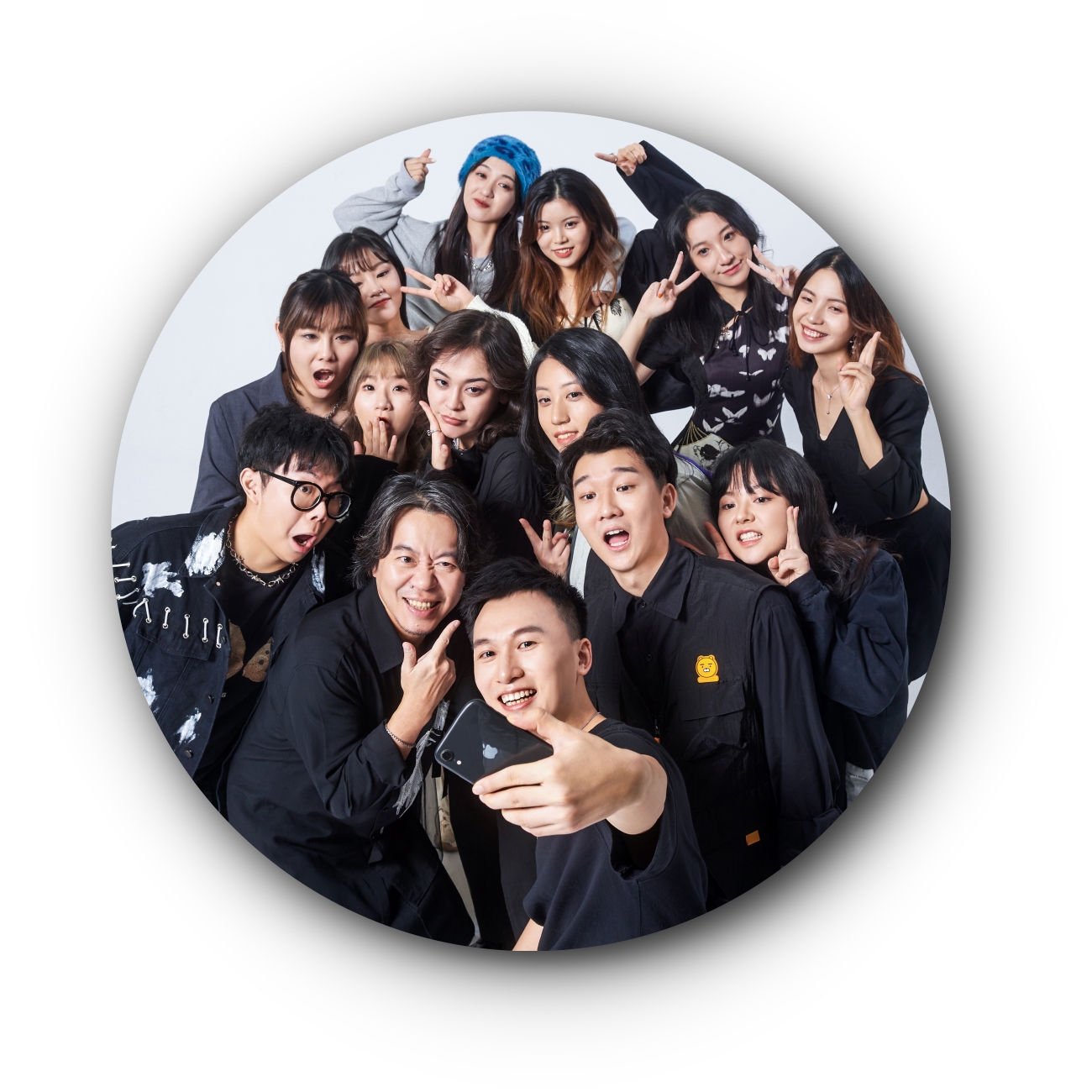
@Yovela: I think brand collaborations brings fresh experience, and Gen Z will notice the freshness. Some FMCG and luxury brands collabs will have a great sense of contrast, and consumers will be curious about what they’ve done. Finally, there will also be a kind of ‘conformity’: my friends have been there, bought it, drank it…so I’m going to check it out too.
@Aurora: It’s not just about changing packaging and labelling. Instead, it is about brand fusion and co-creation. Taking KFC and Pop Mart as an example, collaboration and co-creation becomes a set of IP toy blind boxes. Unlike most brands that simply use the image of the co-branded IP, KFC wanted to attract young people while keeping valuable brand equity. Therefore, the most classic Colonel Sanders and KFC food were used as inspiration and perfectly integrated into the DIMOO design, vividly and interestingly showcasing the KFC brand’s charm.
@Yike: Like Fendi X Heytea’s case, Fendi is a luxury brand that “can only be admired from afar” by most people. But through a collaboration with beverage brand Heytea, with a slogan of “19 yuan to buy the first luxury item in your life,” it becomes affordable to almost everyone. Through culture and brand identity, the saying meets the unique psychological emotions of consumers. Everyone feels the kind of psychological implication that one is buying bubble tea with extra benefits. Together with the brand’s marketing, two brands which seem to be irrelevant brought a massive amount of trending topics on social media, from product packaging to design, and quickly broke out of the circle to become a hot topic online.
@Arya: The brands themselves are not quite closely related but are well known, which will stimulate consumers’ curiosity. Undifferentiated collaboration breaks down consumer stereotypes and perceptions, which is really a “brave” move.
@Dina: With differentiation and a “thinking out of the box” mindset, the point of such collaboration, in my opinion, is to step out of your comfort zone and break out of your own bottleneck. I think it will continue to rise in the short term, but for a brand itself, branding outweighs constant collaboration with other brands.
@Zyn: It is an excellent opportunity for emerging brands to get exposure quickly. As more consumer sub-cultures emerge, brand collaborations have more approaches and will help emerging brands as a long-term strategy. Althought there may currently be some comments about the brands’ market sinking, mainstream opinions still trend positive, tapping and bringing brands and potential customers closer together.
@Yiyi: Such fantastic brand collaboration will be eye-catching regardless of its format and presentation. No one can help but be surprised by the sudden announcement of almost unrelated products. To break the circle and achieve this sense of shock, brands need something new; collaboration is the most direct way to do that. But brands should be careful about content. Otherwise, it may produce the opposite effect. They can’t just cooperate for the sake of exposure and popularity.
@Huanhuan: Brand collaboration will make luxury goods more accessible and trendy, but if the quality of the co-branded products cannot be guaranteed, it will affect the “classic” style of the luxury goods.
@Jing: 16-25 years olds who are active online or are heavy users of social media platforms love to buy trendy products, as these collaborations give them an illusion of purchasing luxury goods at the price of a cup of milk tea. Brands with deep insights into the new trend of post-pandemic consumption downgrading are catching the user’s pain points at the moment.
Tom Zhang
Associate partner, Prophet Shanghai

Luxury brands are actively engaging in collaborations with ‘fun’ consumer brands to create desire among young consumers and drive future growth. These collaborations provide effective platforms for physical and social engagement with the target audience. While many in the audience cannot comfortably afford expensive items from these luxury brands yet, some may begin by embracing entry-level products or even just accessories, eventually progressing to higher-end offerings.
These collaborations also benefit partner brands, as they can leverage the equities of luxury brands to establish a premium image. This differentiation does not always result in higher prices, but it helps set them apart from competition.
Under the same fashion house of LVMH, the approach taken by the Louis Vuitton x Manner collaboration differed noticeably from that in the Fendi x Heytea collaboration. Louis Vuitton adopted a more calculated strategy, leveraging the City Guide Series. On the other hand, the Fendi collaboration prominently displayed Fendi logos on Heytea cups. These strategies were tailored to the unique circumstances of each brand, with Fendi aiming to recapture attention and generate buzz. However, the question arises as to how this approach might impact the perception of existing Fendi loyalists.
It is essential for luxury brands to defend and reinforce the perception of exclusivity. Therefore, they must carefully manage the balance between exclusivity and accessibility, for both its own brand and product architecture or external partnerships.
Continuously relying on pop-up collaborations is not wise for new brands either. Over time, consumers can become fatigued by the constant influx of collaborations. Moreover, it is crucial for these brands to gradually establish their own unique brand identity and distinctive equities.
David Zhang
Senior planning director, McCann China

Taking a look at the purpose behind brand collaborations, we see the following reasons:
First, to increase brand awareness, that is, to expand a broad audience base. For example, a niche brand (Fendi) and mass brand (Heytea) collaboration opens the door and lets more people know Fendi’s target design.
Second, it’s to increase brand recognition, such as symbolic IPs collaboration, especially when the partner’s brand power (for instance, brand influence or brand value) is greater. It will help leverage customer preferences to migrate to your own brand.
Last but not least, it will increase the power of products by creating scarcity, raising premiums and driving up sales.
In this sense, Fendi x Heytea and Louis Vuitton x Manner, both sides of the collaboration, can still achieve at least one of the above purposes. When the discussion goes beyond brands’ original core consumer bases, it has proved the value of such collaboration.
Of course, if the brand with higher influence or greater value, like Fendi and LV, can collaborate with low-cost or even zero-cost offers while taking care of the experience of its high-end consumers, to avoid lowering its brand image, the campaign and collaboration need to be carefully managed by the brand. However, since this kind of collaboration is temporary, it is a better strategy but not mandatory.
Teriea Lu
Consultant, R3
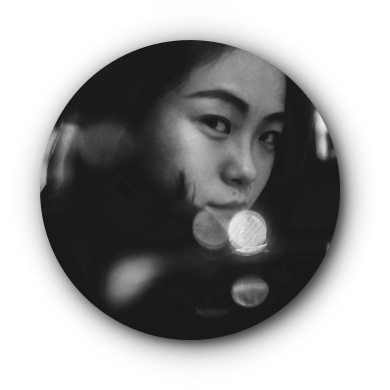
There’s no specific target audience in this case. As most of these collaborations are aiming to create volume and keeping the brand exposure in mass market, it’s not exactly the same as the lipstick effect. However, I believe most marketers are aware we’re officially walking towards economic calamity. While inflation is climbing, celebrity collaborations are out of control and often come with enormous impact for the brand.
Hence, how to leverage big buzz with minimum cost becomes even more important. Offline pop-ups seem to be a better option to gain UGC on digital platforms. Sustainable strategy is never one thing only, real sustainability is combined in shifting and optimising between all marketing touchpoints. Getting to know the market the consumer and more important, the competitors well is key. To learn from your competitors, extract the best practices and look out for the pits they fell into.
Arnold Ma
CEO & founder of Qumin

Teenagers all the way up to the middle-aged (that covers the post-80s to post-00s) are the major consumers of coffee products in China. Moreover, post-90s and post-95s are the backbone consumer of Hey Tea, followed by post-00s. Meanwhile, Manner Coffee also doubles down efforts making it appeal to the post-95s and post-00s. Therefore, by collaborating with these brands popular amongst the post-90s and post-00s, luxury brands show their intention to target those demographics.
Scarcity and brand affinity on steroids. Customers are given the scarcity of the luxury brand, mixed with the familiarity of everyday products they love. Both brands gain upsides by making a product already desired by their audiences.
Play on colours. This coincides with the domestic rising Dopamine trend, which incorporates bright colourways – an emerging Gen Z trend in China. This trend is particularly good for drinks brands, as they tend to approach such collaboration by curating novel hangout spaces for consumers to kick back and relax, which also helps luxury brands create immersive consumer experiences. As mentioned earlier, it’s a win-win with luxury brands and gets them closer to consumers (in hutong alleys and in streets), increasing their offline presence and extending the reach of their brands’ stories.
Local brands are using this opportunity to improve their brand image among their audience. While foreign brands are using domestic brands to “borrow” authenticity in an era where Chinese people are growing weary of flashy foreign brands and favour a more nationalism style. Meanwhile, visual appeal is also important in drawing attention from the young demographics. As this is something that would help brands with user-generated content (UGC), which further benefits campaigns online voices.
Chinese consumers are much more open about seeing luxury brands in various collaborations and activities. More so, as part of the collaborations, it’s also important to note that these campaigns create a great opportunity for luxury brands to tell their brand story. To help the audience experience the brand culture.
